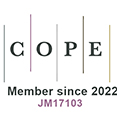Figure3

Figure 3. Visual hallucination analysis results. (A) the JSD is employed to measure the dependency of each generated token on the visual input. The JSD corresponding to articles and prepositions (such as

Figure 3. Visual hallucination analysis results. (A) the JSD is employed to measure the dependency of each generated token on the visual input. The JSD corresponding to articles and prepositions (such as


All published articles are preserved here permanently:
https://www.portico.org/publishers/oae/